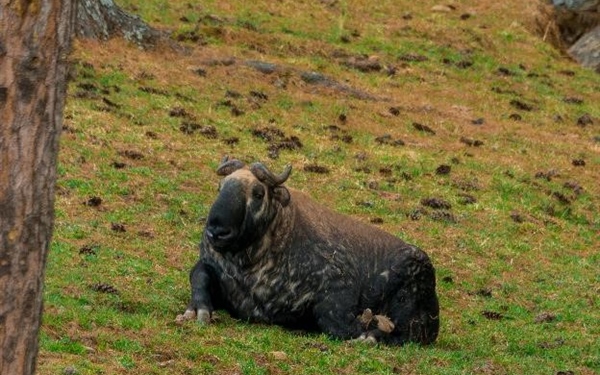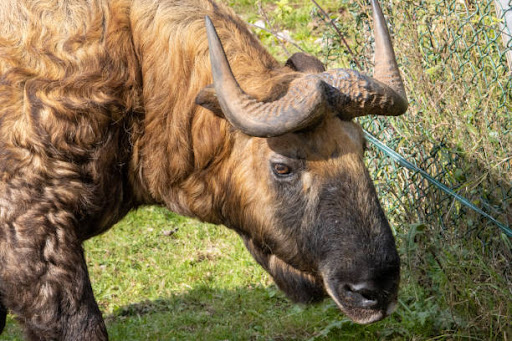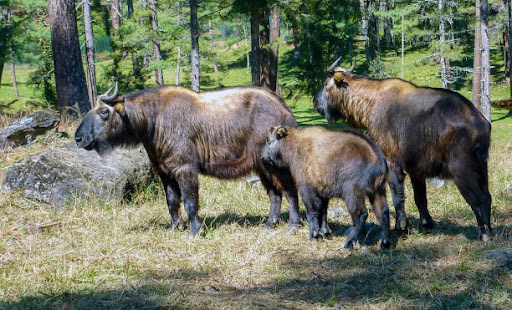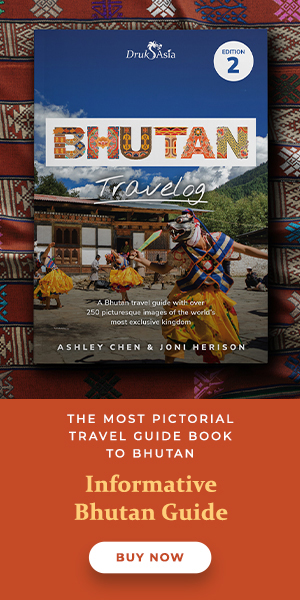Takin: Bhutan's national animal looks like something out of a myth
The takin looks like a goat with a sheep’s body. It is so queer-looking that it has been described as a Dr Seuss creation.

How was takin created?
Once upon a time during the 15th century, Drukpa Kuenley, also known as the “Divine Madman”, was at a feast. At the end of the day, the guests beseeched him to create a miracle, so he took a goat’s head and fixed it to a cow’s skeleton. With a snap, he created a queer-looking creature. It looked like a gnu goat that resembled an ox, yet was more closely related to wild sheep. It was a takin (Budorcas taxicolor), Bhutan’s national animal.
What is a takin?
Whether you believe the story or not, it’s interesting to note where the storytellers are coming from. The takin does look like something out of a myth. Those that have seen the takin describe it as one of the most odd-looking animals they have ever seen. Some describe it as a Dr Seuss creation, others refer to it as the “goat antelope” or the “gnu goat”.

The takin is hoofed, has hunched shoulders, small ears, and a short, thick neck. Its horns face backwards from its broad face. But one of its most distinguishable features is its giant nose, which compelled German-American biologist George Schaller to describe the takin as a “bee-stung moose”. Its nose helps it navigate in the mountains—the big nose cavities warm up the air before it reaches the lungs. Otherwise, the takin would lose a lot of body heat just through breathing.
A takin can weigh up to 350 kgs, making it an enormous mammal. Yet, despite that, few have ever heard of this elusive animal, grazing in the mountainous areas of Asia—India, Myanmar, China, and most importantly, Bhutan. Despite their size, the takins can bound up and down steep mountain slopes with impressive speed and agility.
The takin does not have skin glands, but they secrete an oily, bitter substance with a burning taste that acts as a natural raincoat. Anywhere a takin has rubbed its body, you would find this oil. Furthermore, male takins spray urine on their faces and various body parts as a sign of status.
Takins are versatile herbivores that live on a large range of plants — biologist and takin expert, Tshewang Wangchuk, counted 65 species of plants in a takin’s diet. The takins also salt-licks, which as the name suggests, is when a wild animal licks naturally occurring salt deposits. The salt provides a healthy source of minerals and also neutralises plant toxins, so yay for the takins.
Where to see a takin?

If you wish to see a takin for yourself, wait no longer! All you have to do is travel to Bhutan and visit the Motithang Takin Preserve. The facility was once a mini zoo before it was converted into a takin preserve. After the takins were released into the wild, they refused to return to the surrounding forest. Instead, they wandered into towns, looking for food, making a nuisance of themselves. Thus the Bhutanese set up the preserve to give the takins a home.
Now, if you desire to see a takin in the wild, it is a different ball game altogether. Takins thrive in Bhutan because of the country’s pristine forest cover, but that is also the reason why spotting one in the wild is a challenge.
Usually, the takins hang out in small groups, hidden behind the dense forest covers. However, your opportunity to sight a takin presents itself during the monsoon season, when they head for high-altitude areas in northwest Bhutan. The takins gather in large groups of around 200 for one purpose and one purpose only — sex. There have been accounts of dramatic battles, as the male takins fight over the female takins. There is head-butting and horn-slamming.
A seven- to eight-month pregnancy follows this hair-raising mating season, so that the calves are born during the spring the following February or March.
A good location to witness takin herds is the Jigme Dorji National Park in Gasa Dzongkhag, a protected area of 1,679 square miles situated on the Tibetan border. An excellent time to eyeball a takin is at the Takin Festival, held every February for three days at this park. You’ll get the opportunity to watch the takin in its natural habitat.
Nomadic tribes use the festival to make a livelihood that would last them until the next season. They set up tents made of yak hair, cook traditional (and exotic to us) food, and sell handmade crafts, yak butter, and yak cheese.
The highlight of the festival is the performance of a takin. It’s your chance to admire the physique and agility of the great takin up close.
Find out how you can travel to Bhutan to see Bhutan's mythical national animal.





